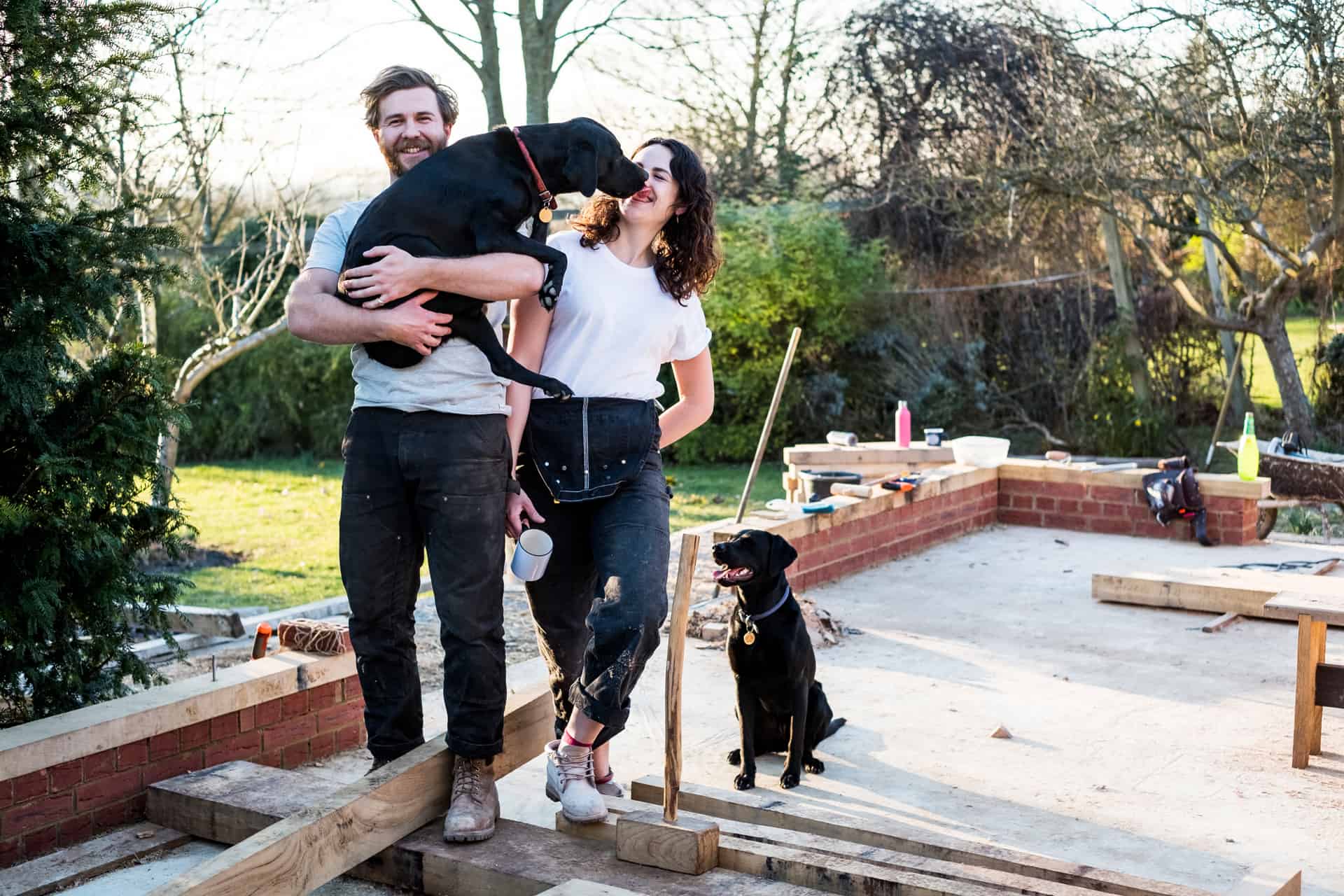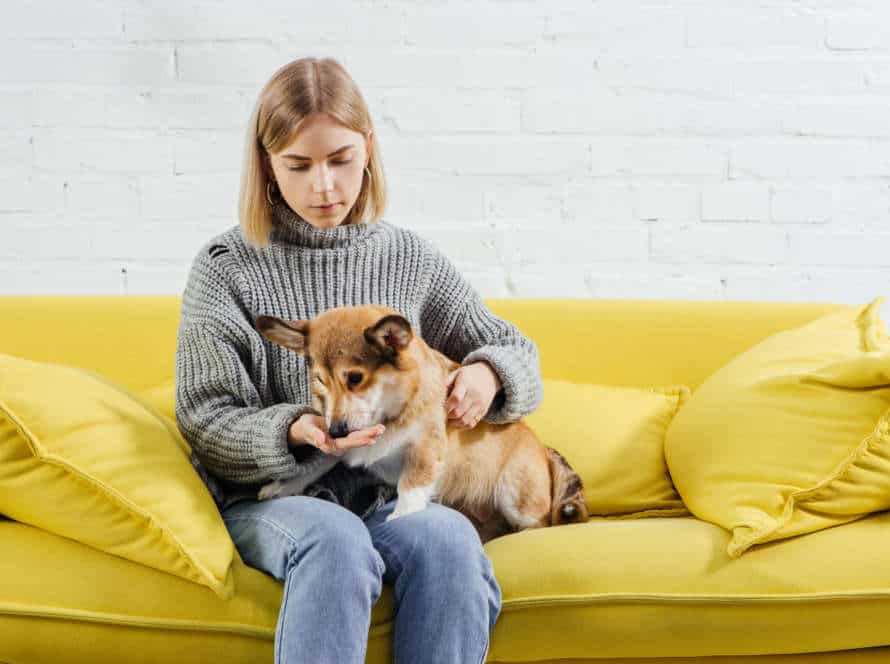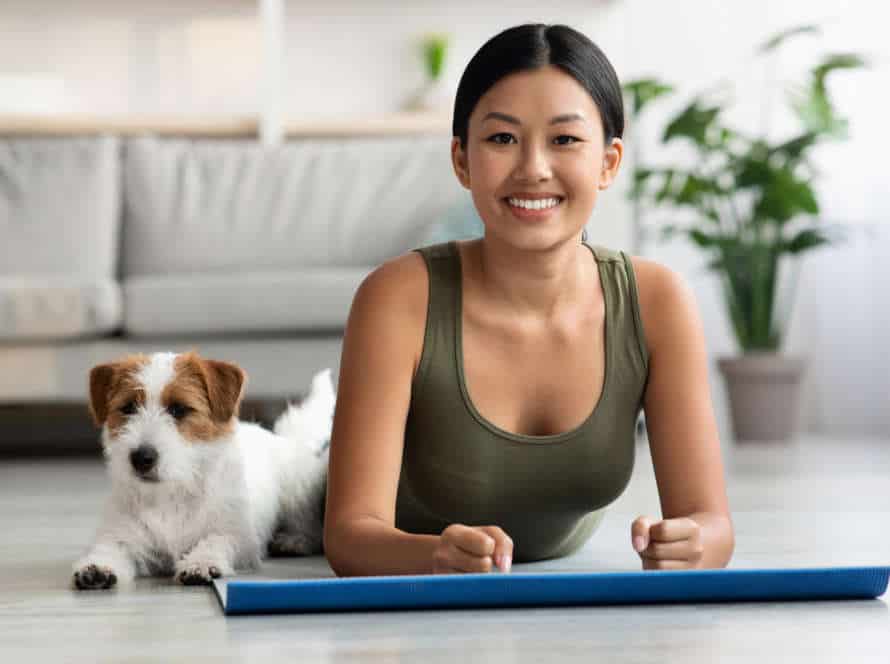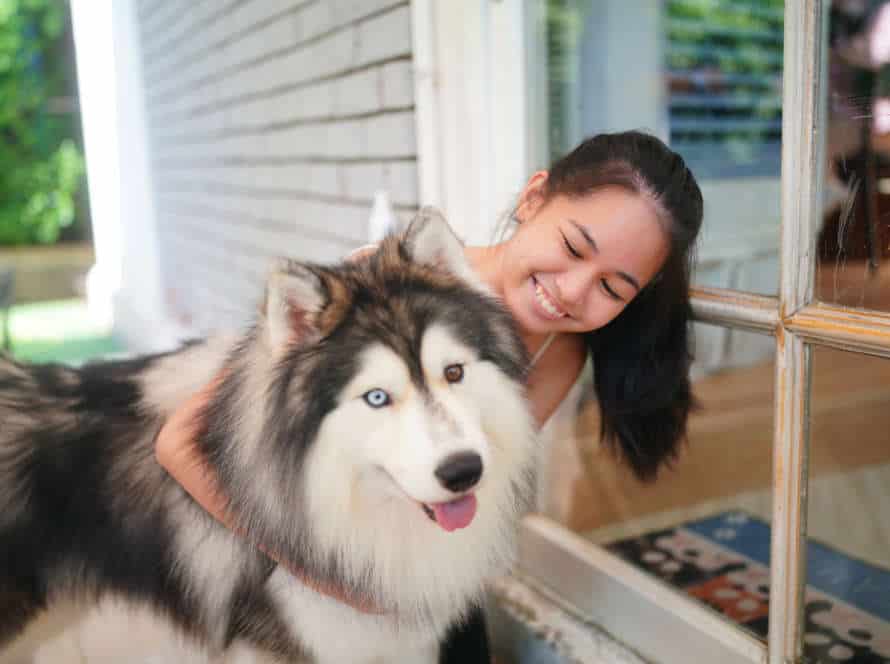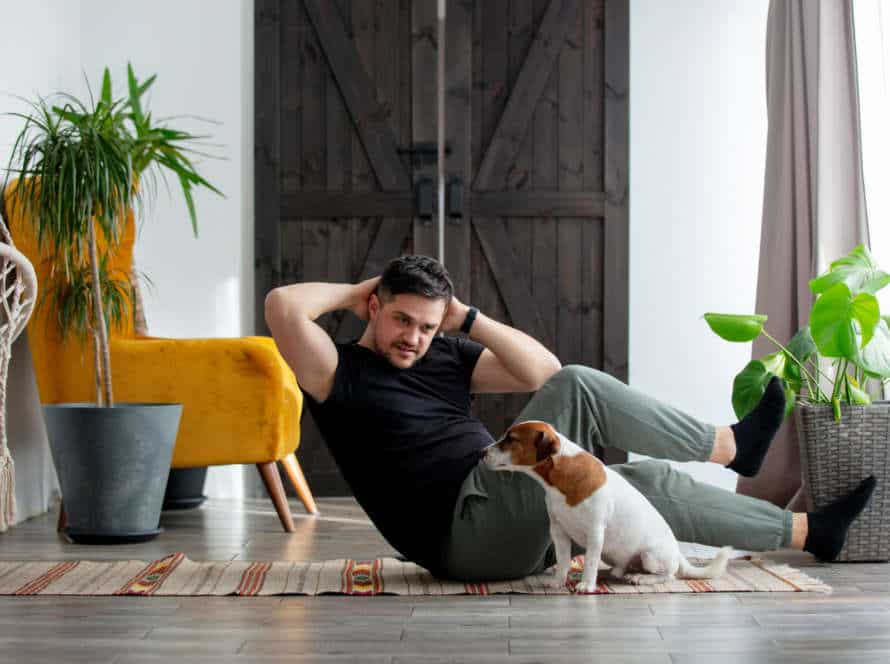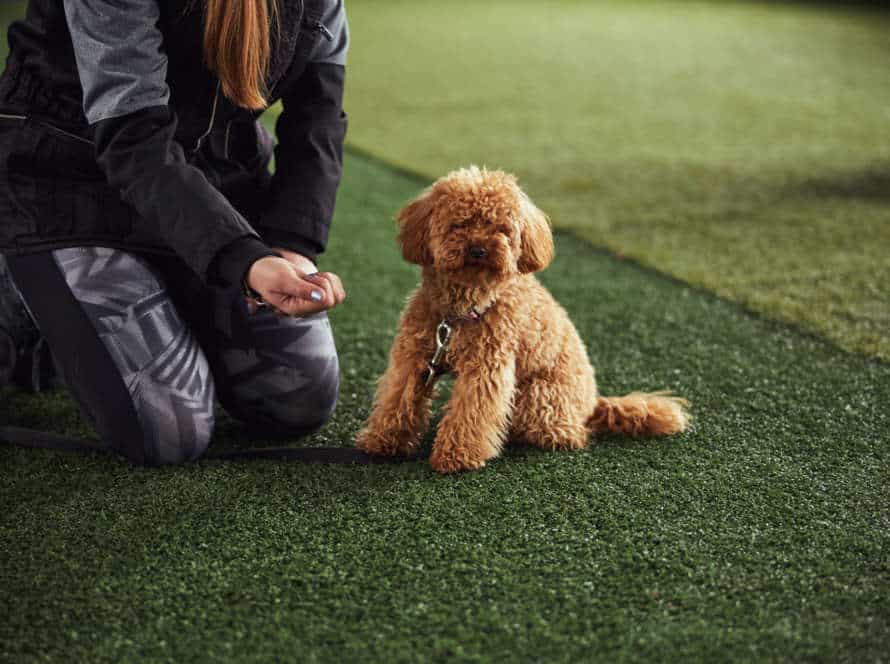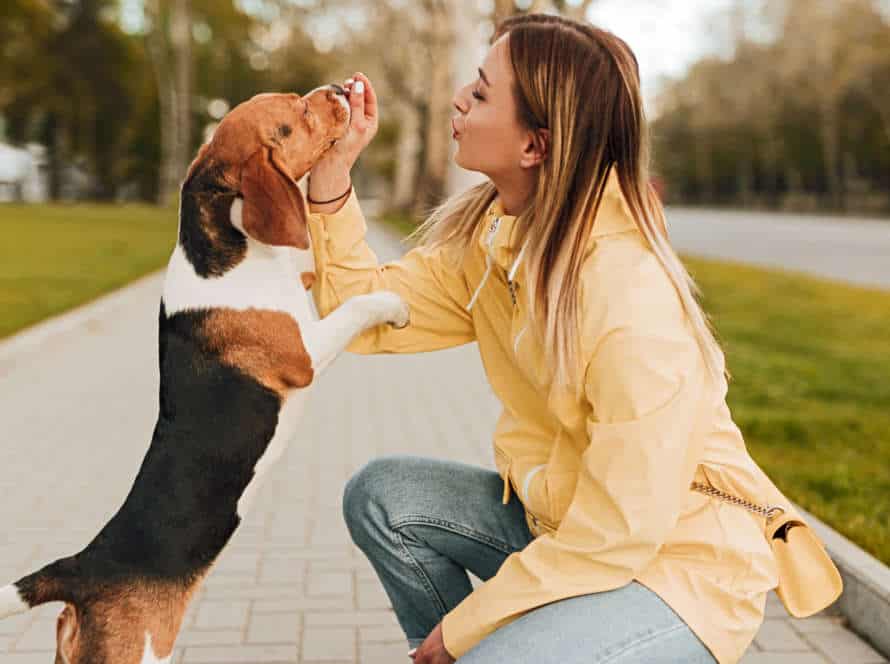Trust-Building Secrets Every Dog Owner Should Know
Trust-building is essential for a joyful and sound relationship between a dog and its owner. Here are three secrets every dog owner should be aware of:
- Consistency is essential: Dogs need routine and consistency. Set clear expectations and stick to them consistently to build trust and assurance in your dog.
- Positive reinforcement: Rewarding good behavior is a great trust-building tool. Use treats, compliments and fondness to strengthen desirable behaviors and create trust in your dog’s mind.
- Body language matters: Dogs react well to body language and non-verbal signals. Use soothing body language, like maintaining eye contact, softening your voice and avoiding sudden movements to generate a sense of trust and security in your dog.
Remember, trust-building takes time and patience. Consistency, positive reinforcement and right body language are useful ways of forming a strong bond with your furry companion.
Understanding Your Dog’s Body Language
Gaining trust with your pup? Comprehending their body language is the key! Dogs are sharply aware of their surroundings, so understanding their movements is vital for a dependable and trusting relationship. By noticing and comprehending their body language, you can begin to create trust and respect with your dog. Let’s delve into the body language of dogs!
Learning how to read your dog’s body language
Knowing your pooch’s body language is essential for successful communication. It lets you comprehend their feelings, behaviour and emotions, so you can have improved contact and build trust. Here are some clues to watch out for:
- Tail: If it’s wagging, then they’re probably excited. But, if tucked, it’s a sign of fear or anxiety.
- Ears: Pointy ones mean they’re awake and alert. Folded back can mean aggression or fear.
- Posture: Loose and relaxed? They’re calm and happy. Stiff and rigid? Fear or aggression.
- Eye contact: Direct contact? Aggression. Relaxed? Comfort.
Pay attention to their body language and you’ll get to know their needs and wants better, which in turn strengthens your connection with them.
Fun fact: Dogs communicate through barking, howling, body language and even scent signals!
Understanding your dog’s facial expressions
Understanding your pup’s face is key to understanding their body language and creating trust. Here are some common expressions to watch out for:
- Eyebrows raised: This means interest or curiosity.
- Furrowed brow: Worry or stress.
- Ears forward: Alert and engaged.
- Ears pinned back: Fear, anxiety or aggression.
- Yawning: Tiredness, anxiousness or stress.
- Licking the nose: Stress, anxiety or anticipation.
By being mindful of your pup’s face, you’ll better comprehend their feelings and act accordingly. This builds trust and strengthens your bond.
Identifying what your dog is feeling through their tail
Your pup’s tail can tell you a lot! It’s an important part of understanding your furry friend. Here’s what the different tail positions mean:
- High and wagging: Excited, happy, and confident.
- Horizontally: Calm and relaxed.
- Tucked between the legs: Anxious, scared, or submitting.
- Stiff and raised: Aggression – a warning sign to back off.
- Wagging slowly: Uncertain, nervous, or suspicious.
It’s essential to know your dog’s body language, including their tail. This helps you communicate better and build a strong relationship based on trust and respect.
Positive Reinforcement Training
Positive reinforcement training is awesome for strengthening the relationship between you and your pup. This training focuses on offering rewards and praising your pet when they do something you desire. Let’s look into how to use positive reinforcement to create a strong bond with your pooch.
Using treats and praise effectively
Successful positive reinforcement training requires the right use of treats and praise. Tips to help:
- Timing counts – award your pup after they do the desired action, to link it to the reward.
- Use yummy treats for more difficult tasks, and easier ones for simpler ones.
- Accompany treats with verbal praise to encourage the behaviour, and strengthen the bond.
- Change up the treats to stop boredom and keep your pup keen.
By using treats and praise well, you can train your dog without fear or punishment, and make a trusting relationship with them.
Utilizing clicker training for trust-building
Clicker training is a great way to build trust with your pet. It uses positive reinforcement, ignoring bad behavior. Get started with these tips:
- Get your pup used to the clicker. Click and give them a treat after each click.
- Always follow up with a treat after a command or a good deed.
- Be consistent with the timing of the clicker and treat.
- Introduce new commands bit by bit, not all at once.
- Take it slow and be patient; trust-building takes time.
Pro tip: Clicker training creates a strong bond of trust. Be sure to give lots of praise and rewards to keep them motivated.
Consistency and positive reinforcement for long-term behavior change
For long-term dog behavior change, use consistent and positive reinforcement training. Trust comes from this. Here’s how:
- Consistency matters. Set rules and boundaries and stay consistent. This will make your dog feel safe and secure.
- Reinforce good behavior. Give treats, praise, or playtime when they do something right. This builds trust and strengthens your bond.
- Be patient and persistent. It takes time and effort. Consistency and positive reinforcement will help.
Tip: Positive reinforcement isn’t all about treats. It’s about building a strong, trusting relationship with consistent and supportive techniques.
Socialization Techniques
Socializing your pup? Essential! It helps your dog learn how to act around others. Get started early to ensure your pup is safe. Here’s what you need to know about socialization techniques. They can help build trust between you and your pooch!
Exposing your dog to new environments
Give your pup a great start in life! Expose them to new environments. Here are some trust-building tips to help them adjust:
- Start small. Introduce environments gradually. Increase intensity and duration over time.
- Use positive reinforcement. Reward good behavior. Treats and affection build trust.
- Lead by example. Remain calm and confident. Your dog is more likely to follow you.
- Be patient. Socialization takes time. Be persistent with training.
Follow these trust-building secrets for a confident pup! Pro tip: Enroll in obedience classes or work with a trainer.
Introducing your dog to other dogs and people
Introducing your pup to other doggos and humans is an important part of teaching them socialization and trust. Here are a few tips:
- Start slow: Begin with low-stress scenarios and increase exposure over time.
- Leash control: Use a strong leash to manage your dog’s movements and make them feel safe.
- Positive vibes: Reward your pup with treats or kind words when they interact calmly with new people or dogs.
- Respect: Always respect your pup’s limits and don’t push them into interactions.
- Patience: Each pooch has their own character and pace of learning.
By following these steps, you can help your pup feel more relaxed and calm around other people and dogs. Pro Tip: If you need more help, seek advice from a professional dog trainer.
Providing positive experiences for your dog during socialization
Providing good experiences during socialization is important to create trust and a strong bond with your pup. Here are some methods that can help:
- Begin early: Socialize your pup from a young age to make them into an assured and contented adult pooch.
- Take it slowly: Introduce your dog to new people, places, and situations gradually, allowing them to adjust at their own speed.
- Utilize Positive Reinforcement: Reward your pet with treats, compliments, and love when they show good behavior during socialization.
- Make it enjoyable: Have fun with your dog by doing activities like playing fetch or going for walks during socialization to make it a pleasant experience.
- Be reliable: Consistent and frequent socialization will help nurture good behavior and strengthen the trust between you and your dog.
Pro Tip: If your dog exhibits signs of uneasiness or hostility during socialization, get the help of an experienced trainer to address those issues.
Building Trust Through Playtime
Playtime is an awesome way to build trust with your pup! It helps them learn to trust you as well as strengthens your bond. Plus, it’s a great way to train and keep your dog physically and mentally fit.
Here are the best tricks to use playtime to build trust:
Choosing the right toys for your dog
Choosing the right toys for your pup can help build trust and your bond. Use these tips to make sure you select the best toys.
- Know your pup’s play style. If they love to chew, get them durable ones. Avoid breakable toys if they are a strong chewer.
- Age and size matter. Puppies need smaller and softer toys. Older dogs might not have as much energy, so opt for easier ones.
- Engage all their senses. Toys with different textures, sounds, and smells keep them mentally stimulated.
- Always supervise. No matter what toy, keep an eye to ensure their safety.
Pro tip: Rotate the toys regularly to keep them engaged.
Incorporating games into your daily routine
Include playtime with your pup in your daily routine! This is the best way to create trust and strengthen your relationship. Dogs love to have fun and doing this regularly can help prevent behavioral issues and stress. Here are some ideas:
- Fetch – Throw a Frisbee or ball and let your pup go get it.
- Hide and Seek – Hide a toy and get your pup to find it. Later, you can hide and let them find you.
- Tug of War – Use a tug toy and have your pooch pull it while you hold the other end.
- Puzzle Toys – These are designed to keep your dog occupied for long periods of time.
Pro Tip – Playing with your dog is not only great for bonding but also for keeping them physically and mentally healthy.
Using play as a bonding experience with your dog
Playing with your pup is super fun! Plus, it’s a great way to create trust and strengthen the bond between you two. Here are some tips to get the most out of playtime:
- Get the right toys: Choose toys that fit your dog’s size, breed, and energy. For example, if they love chasing balls, get something strong and durable.
- Use positive reinforcement: When they do something good, reward them with treats or kind words. This will help them repeat the same behavior in the future.
- Make time for play: Spend at least 30 minutes each day playing with them. That’ll help them expend their energy too.
By following these tips, you’ll have an awesome and effective way to build trust and strengthen your connection with your pup.
Creating a Safe Space for Your Dog
Want to build trust with your pup? Essential! It takes patience, consistency, and kindness. Here’s how:
- Secret #1 – Patience! Give your doggo time to adjust.
- Secret #2 – Consistency. Stick to routines and reward them for good behavior.
- Secret #3 – Kindness. Show your pup lots of love and attention.
These trust-building secrets will help you and your pup create a safe and trusting relationship.
Designating a comfortable area for your dog
Designing a cozy spot for your pup, like a crate or corner of the house, can help build trust between you and your pooch, especially if they are a rescue or had tough experiences.
Here’s how to make a safe space:
- Pick a location – Select a quiet spot in your home, away from busy areas, for your pup’s safe space.
- Introduce a bed or crate – A comfy bed or crate is key for their comfort, especially if they have anxiety or fear.
- Add toys and blankets – Providing familiar items can make them feel secure.
- Keep food and water – Make sure your pup has easy access to food and water to stay hydrated and comfortable.
- Spend time – Spend time with your pup in their safe space to build trust and bond.
Incorporating routines to help your dog feel secure
A regular routine can make your pup feel safe and secure. Here are some tips to help them out:
- Feed your dog regularly; it’s good for their digestion and behavior.
- Take them for a walk on a regular basis. Do it each day at the same time.
- Provide them with a comfortable space, like a crate or a room in your house.
- Train your dog consistently; keep sessions short and rewarding.
- Make time for cuddles and play; show them lots of love.
Routines and structure are key for a stress-free pup. These tips will help your dog feel secure and build your bond.
Using reinforcement to build trust in their safe space.
Creating a comfy area for your pup is vital in building trust and strengthening your relationship. Reinforcement methods can link their safe area to positive memories, making them feel more relaxed and confident. Here are some reinforcement tips to make your dog’s space secure:
- Positive Reinforcement: Hand out treats, toys, and compliments when they enter their area. This will help them link good memories to it and make them more willing to use it.
- Consistency: Follow a routine when using the area, like during fireworks or thunderstorms.
- Respect Boundaries: Let them come and go as they please and don’t bother them when they are in it.
By using reinforcement techniques to make a secure space for your dog, you can strengthen your connection and make them happier and healthier.
Frequently Asked Questions
1. How can I build trust with my dog?
Building trust with your dog involves consistently providing them with a safe and predictable environment, using positive reinforcement training methods, and spending regular quality time with them.
2. What are some signs my dog trusts me?
Signs your dog trusts you can include seeking out your company, showing enthusiasm during training, and exhibiting relaxed body language around you.
3. How can I help my fearful dog build trust?
Helping a fearful dog build trust involves going at their pace, avoiding overwhelming them with new experiences, and using counter-conditioning techniques to help them associate positive experiences with previously scary stimuli.
4. Can I build trust with an older dog?
Yes, it is never too late to start building trust with an older dog. Consistency and positive reinforcement are key, and it may take more time and patience with an older dog who has already developed certain habits.
5. What are some common mistakes that can damage trust with my dog?
Common mistakes that can damage trust with your dog include using punishment-based training methods, being unpredictable, and not spending enough quality time with your dog.
6. Why is trust important for my dog’s well-being?
Trust is important for your dog’s well-being because it helps them feel safe, secure, and able to fully engage in their environment. A trusting relationship with your dog can also strengthen the bond between you and lead to a happier and more fulfilling relationship.

